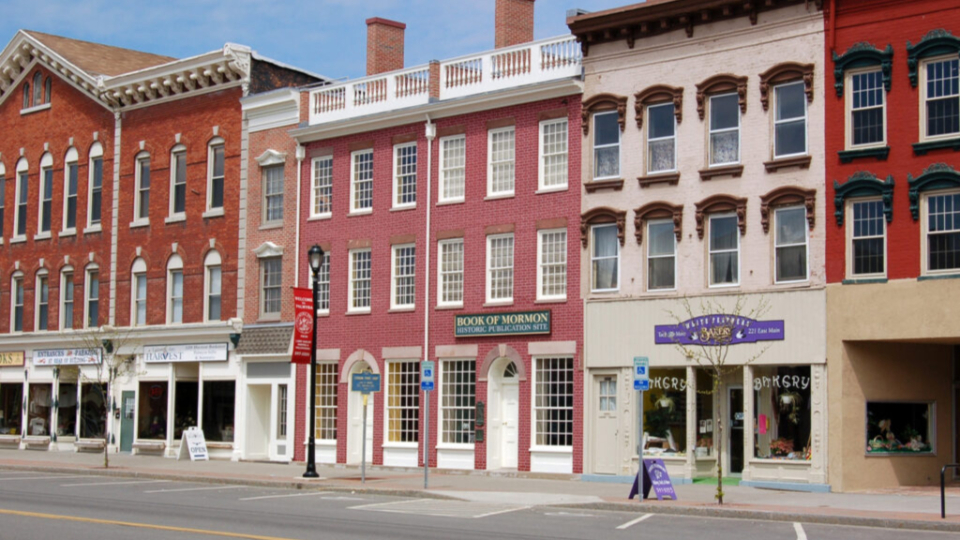
CFM-Sites-5.jpg
The site of E.B. Grandin’s print shop in Palmyra, New York, where the Book of Mormon was published, shown after its restoration in this 2006 photograph. Photo by Kenneth Mays, courtesy of Church News.All rights reserved.This story appears here courtesy of TheChurchNews.com. It is not for use by other media.
By Christine Rappleye, Church News
The sections and history covered in recent Doctrine and Covenants Come, Follow Me lessons refer to printing the Book of Mormon; events that happened on the Whitmer farm in Fayette, New York; the experience of the Three Witnesses; and events in Harmony, Pennsylvania.
Following is information about the history and some photos of the locations to help supplement your studies in Come, Follow Me.
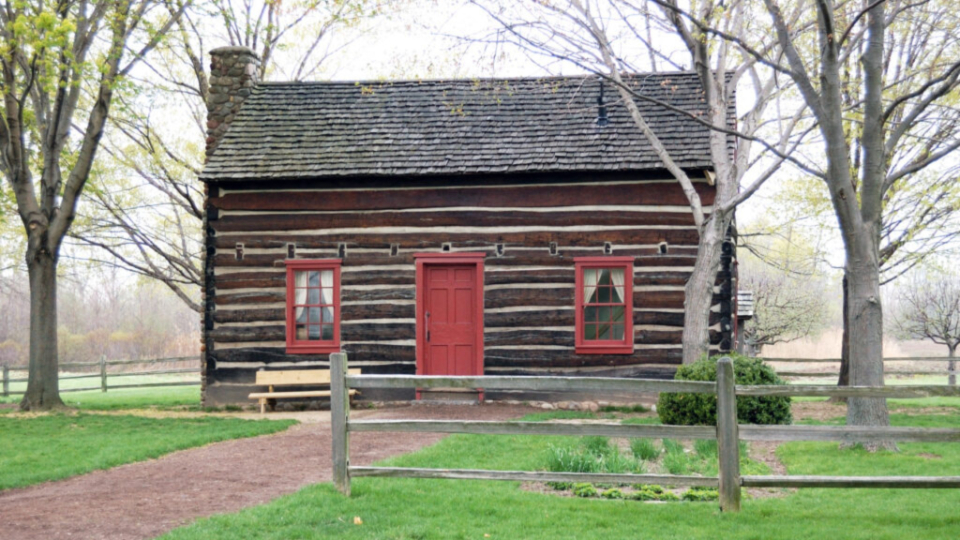
CFM-Sites-1.jpg
The Whitmer home in Fayette, New York, shown in 2007, where the Prophet announced who the Three Witnesses would be and from where they left to gain that witness. Photo by Kenneth Mays, courtesy of Church News. All rights reserved.Whitmer Farm
Joseph and Emma Smith were living in what was then called Harmony, Pennsylvania, in spring 1829, and Oliver Cowdery was staying with them as the translation progressed on the Book of Mormon. Due to unrest in the area, Oliver wrote to his friend David Whitmer about Oliver and the Smiths coming to the Whitmers’ home in Fayette Township, New York, about 30 miles from Palmyra, to finish the translation (see Saints, Volume 1, chapter 7, “Fellow Servants”; and Revelations in Context, “The Knight and Whitmer Families”).
The Whitmer family decided to help with the translation. David Whitmer met the Smiths in Harmony and returned to Fayette Township with them around the end of May.
Nineteen sections of Doctrine and Covenants were revealed in Fayette, New York, including Doctrine and Covenants 17 about the Three Witnesses and Sections 20 and 21 about the organization of the Church.
While the Peter Whitmer Farm, including a reconstructed log house, is currently closed for in-person tours due to the COVID-19 pandemic, virtual tours are available. To schedule a virtual tour, see nyandpahistoricsites.as.me/schedule.php.
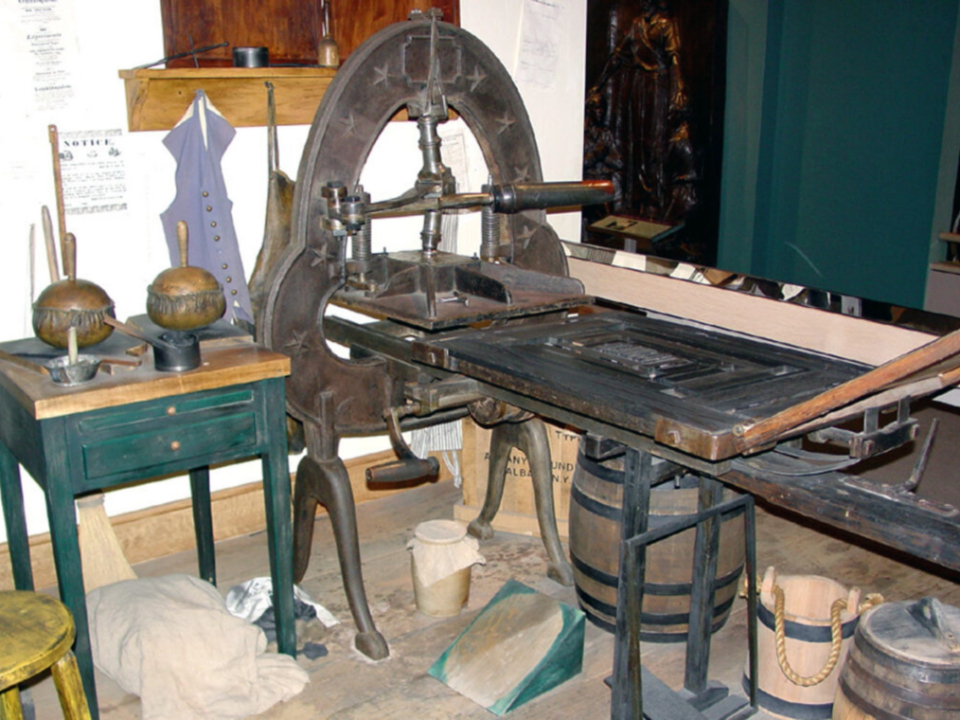
CFM-Sites-2.jpg
The actual press used to print the first edition of the Book of Mormon is shown in this 2004 photograph. Photo by Kenneth Mays, courtesy of Church News.All rights reserved.E.B. Grandin Print Shop
As Joseph Smith and his scribes were finishing translation of the Book of Mormon in June 1829, the focus turned to publishing it. Joseph Smith first traveled 100 miles to Utica, New York, to secure the copyright to the Book of Mormon (see The Grandin Building: Book of Mormon Publication Site on history.ChurchofJesusChrist.org).
Martin Harris and Joseph Smith talked with several printers in the Palmyra and Rochester, New York, areas about printing the Book of Mormon. At 5,000 copies and each book having more than 500 pages, it was a large project for any printer. E.B. Grandin of Palmyra, New York, who initially declined printing the Book of Mormon, later agreed (see The Grandin Building: Book of Mormon Publication Site on history.ChurchofJesusChrist.org).
It cost $3,000 to print the copies, and Martin Harris, a landowner and one of the Three Witnesses to the Book Mormon, helped with the negotiations. He mortgaged his property to Grandin as payment and later sold 151 acres to cover the costs (see Revelations in Context, “The Contributions of Martin Harris”; and The Grandin Press: A Vital Tool of the Restoration on history.ChurchofJesusChrist.org).
The printing process began in September 1829. Oliver Cowdery copied a printer’s manuscript and Hyrum Smith delivered the pages to the press. At the press, compositor John Gilbert, one of Grandin’s employees, took the pages and added the punctuation (see Church History Topics, “Printing and Publishing the Book of Mormon”).
Grandin’s press was the Smith Patented Improved Press, which greatly simplified the printing process and allowed a pressman to make an impression with one pull of a lever (see The Grandin Press: A Vital Tool of the Restoration on history.ChurchofJesusChrist.org).
Copies of the Book of Mormon were available to purchase at Grandin’s shop in March 1830.
The Book of Mormon Publication Site is one of the Church’s historic sites. While in-person tours are currently discontinued due to the COVID-19 pandemic, virtual tours are available. To schedule a virtual tour, see nyandpahistoricsites.as.me/schedule.php.
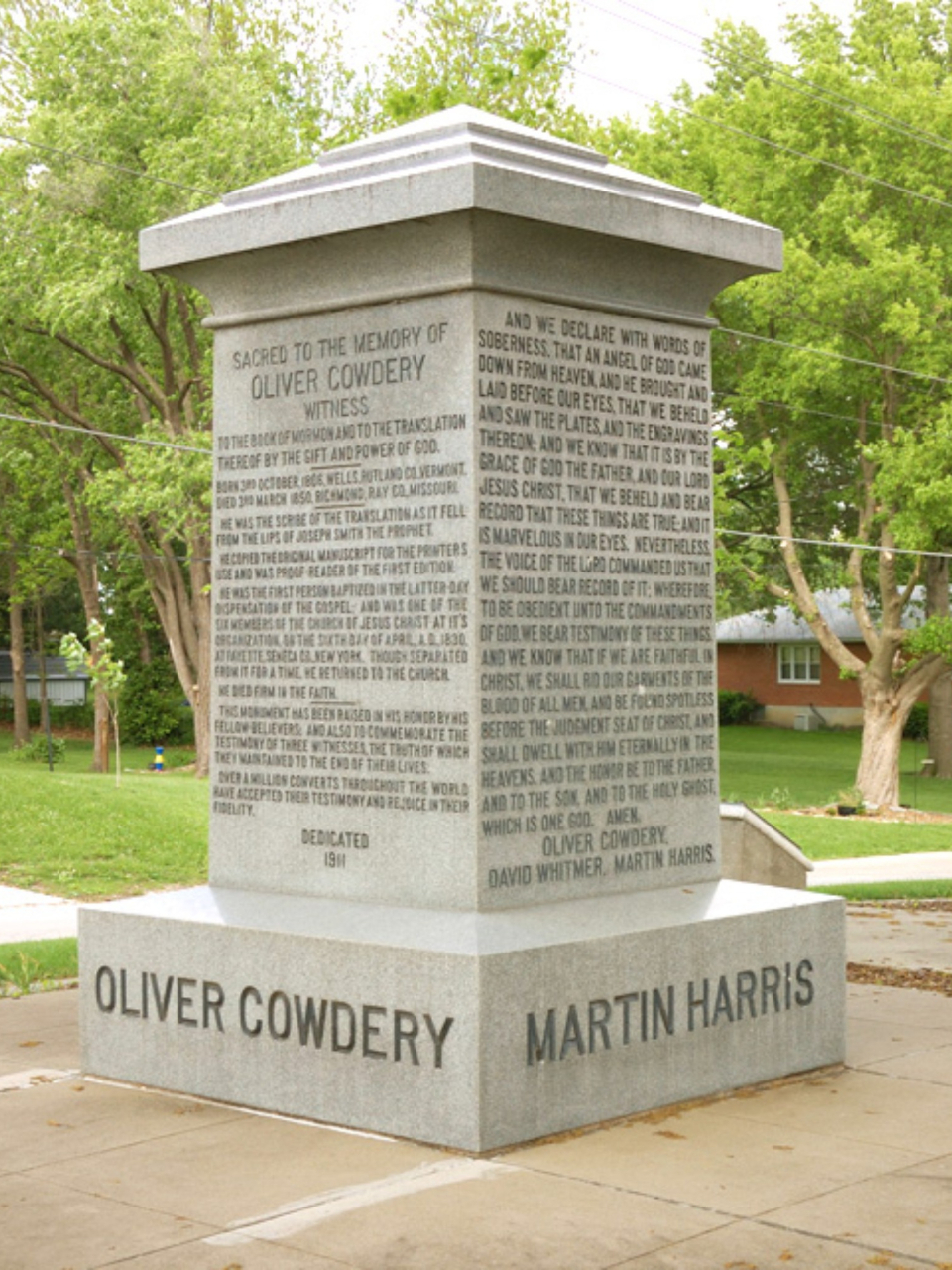
CFM-Sites-3.jpg
The Three Witnesses Monument in Richmond, Missouri, honors the contributions of Martin Harris, Oliver Cowdery and David Whitmer, the Three Witnesses of the Book of Mormon. Oliver Cowdery is buried under the monument, shown in this 2006 photograph. (See Doctrine and Covenants 17.) Photo by Kenneth Mays, courtesy of Church News.All rights reserved.Witnesses
It was in the area of the Whitmer farm in summer 1829 that the Three Witnesses — Martin Harris, Oliver Cowdery and David Whitmer — saw the golden plates along with the interpreters, the breastplate, a sword and the Liahona (see Doctrine and Covenants 17; Saints, Volume 1, chapter 7, “Fellow Servants”).
Eight more men gathered with Joseph Smith at his parents’ farm in Palmyra, New York, and handled the plates. A plaque noting the experience of the Eight Witnesses is at the Smith Family Farm.
A monument to the Three Witnesses was placed in Richmond, Missouri, in 1911 and is where Oliver Cowdery is believed to be buried, according to the Church News archives. David Whitmer is also buried in Richmond, Missouri. Martin Harris is buried in Clarkston, Utah.
In 2011, the monument to the Eight Witnesses was dedicated near Liberty, Missouri, according to the Church News archives. The site is near where Christian Whitmer and Peter Whitmer Jr. are buried. Three other of the Eight Witnesses — Jacob and John Whitmer and Hiram Page — are buried in western Missouri, and the other three — Joseph Smith Sr. and Hyrum and Samuel Smith — are buried in Nauvoo, Illinois.
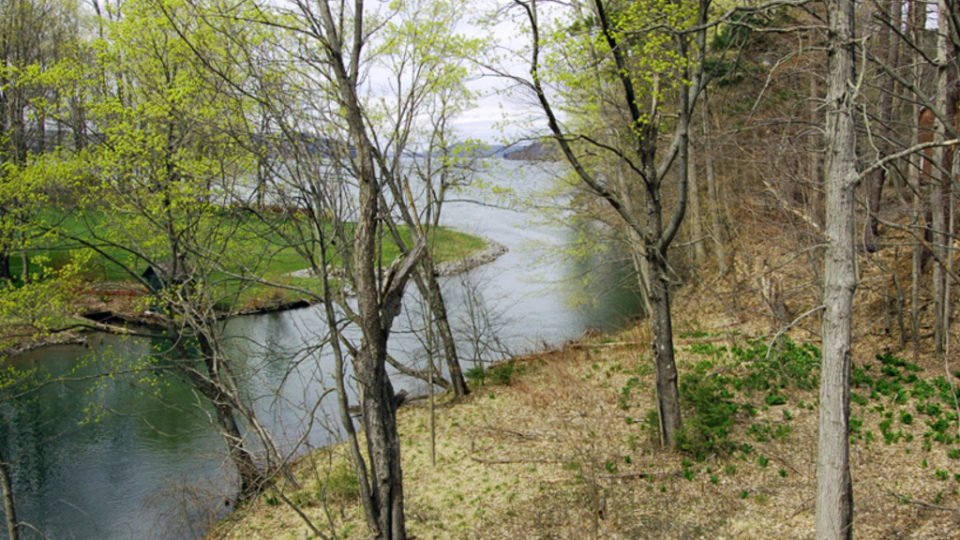
Susquehanna River
The Susquehanna River flows past Oakland Township, Pennsylvania, then known as Harmony, where Joseph and Emma Smith lived. Emma’s parents, Isaac and Elizabeth Hale, also lived in Harmony.
On May 15, 1829, Joseph and Oliver Cowdery prayed in a nearby maple grove for guidance about baptism, and John the Baptist appeared to them, restoring the Aaronic Priesthood. Later that day, both men went to the nearby Susquehanna River and baptized each other. (See Doctrine and Covenants 13 and Joseph Smith- History 1:66-75.)
At 444 miles long, the Susquehanna River is the largest river lying entirely in the United States that flows into the Atlantic Ocean, according to the Susquehanna River Valley and Susquehanna River Basin Commission websites.
Copyright 2021 Deseret News Publishing Company